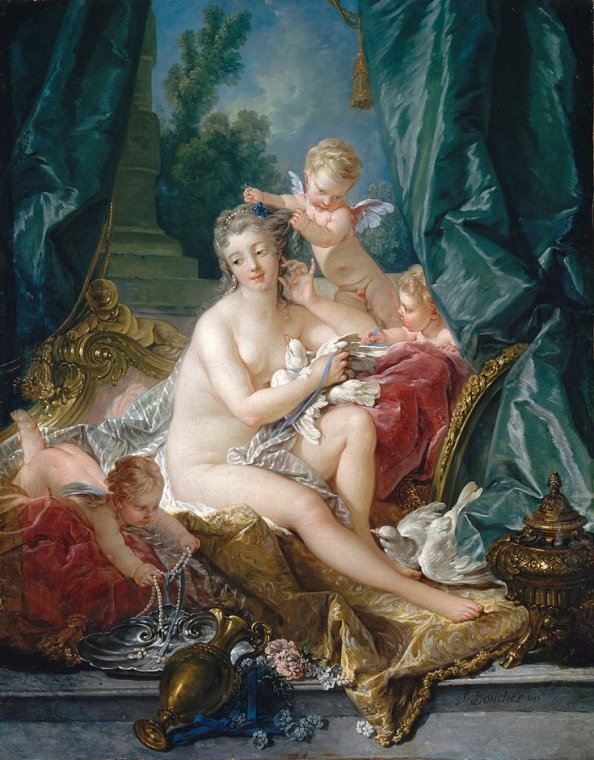
'The Toilet of Venus' by François Boucher offers a new perspective on female beauty as it departures from the classical beauty standards portrayed in Botticelli’s “The Birth of Venus”. The Rococo period prioritised lavishness, sensuality, and opulence. In Boucher's version, Venus is portrayed in a luxurious boudoir setting, surrounded by sumptuous fabrics, elaborate furnishings, and intricate details to exude sensuality and eroticism. This contrasts with Botticelli’s depiction of modesty and purity. However, this artwork still embodies the same ideals of female beauty through the depiction of pale skin and soft and curvaceous facial features and body. Venu’s soft rounded features and voluptuous body reflect the Rococo ideal of feminine beauty which is characterised by lushness and indulgence. In addition, François Boucher’s depiction of Venus aligns with Rococo themes of romance and fantasy as Venus is the goddess of love, sex and beauty. This effectively emphasises the allure and seductiveness of her female form. Boucher’s depiction challenges traditional notions of modesty and restraint by embracing a liberated and sensual expression of femininity.
